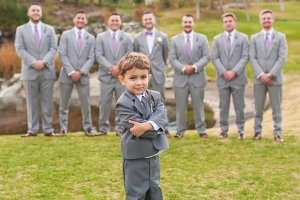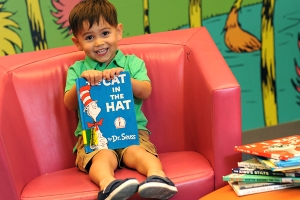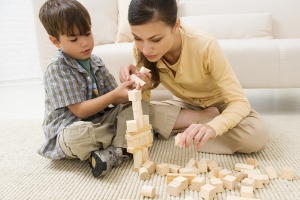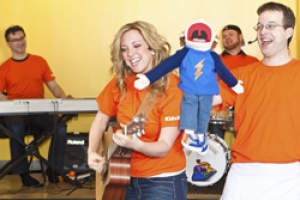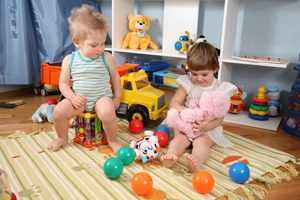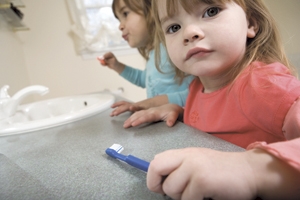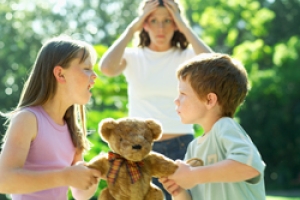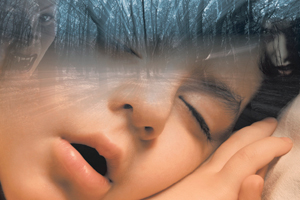
Sinking into the pillow after a long day can be such a treat for a weary parent. Now, imagine closing your eyes and drifting off to much-needed sleep when suddenly blood-curdling screams erupt from your child’s room, causing you to leap out of bed and sprint for his room. With your heart thumping in your ears like a wild stampede, you discover that your child is having another night terror. After finally getting him calmed down, you lie down to try to sleep again while your blood pressure and adrenalin are still pounding from the initial scare. So you wait and listen in case it happens again … Sound familiar? You are not alone. Our household has certainly experienced the phenomena commonly referred to as night terrors or sleep terrors, as both of my children have had night terrors since they were little.
Today’s children are overscheduled and stressed as no other generation has been. As a result, we are seeing children who are anxious and often exhausted, resulting in mood swings and sometimes sleep disturbances.
Night Terrors Explained
Night terrors generally start between the ages of 3–12 years, and experts believe children grow out of them around the time of adolescence. Night terrors are not nightmares, however. Children do not remember night terrors as they do nightmares and usually cannot explain what happened. While they can be very dramatic and alarm the family members witnessing them, they are not dangerous.
According to WebMD.com, “Night terrors occur during the transition from stage 3 non-REM sleep to stage 4 non-REM sleep, beginning approximately 90 minutes after the child falls asleep.” To help identify whether your child is having a night terror or a nightmare, note the timing of the disturbance. If it is early in the night it is likely a night terror. If it is later in the night, it may be a nightmare.
Boys and girls are equally affected by night terrors. They occur in a dream-less sleep state. During REM sleep, the human body is in sleep paralysis. In a classic night terror, a child will seem to be awake and is often sitting up or walking while yelling, screaming, mumbling or crying. He will often have a raised heart rate, rapid breathing and can be sweating and disoriented. He will likely not recognize a parent, but will often calm down after the event and go right back into quiet sleep. Night terrors can last anywhere from 10–40 minutes (usually under 20 minutes) and then the child will fall back asleep.
Many things can cause night terrors, including stress, illness, sleep deprivation, overstimulation, natural brain development and medications. There are no treatments for night terrors, but understanding them can help make them more manageable. Many experts believe getting the proper amount of sleep can help to reduce the incidences of night terrors. If your child has an episode, try to use a calm voice to soothe him and get him relaxed and back into bed.
Luckily, medical treatment is generally not necessary unless the night terror is due to a medical issue. Most experts recommend keeping regular sleep patterns, creating a calming bedtime routine and working diligently to get adequate sleep for their kids.
“We grow, heal and develop during sleep,” says Tracy Zuehlsdorf, a school therapist. She suggests making sure your children get enough exercise each day and reducing their tension and stress through family time or play such as modeling clay or finger painting. Before bedtime have the child use the bathroom. Try reading and lying together, singing the same song each night, debriefing the day and using white noise to help induce a calm sleep.
Hopefully, with some understanding about night terrors and how to handle them, you and your family may finally get to sleep like babies.
Sleep Disturbance Resources:
National Sleep Foundation: www.sleepfoundation.org/articles/sleep-disorders
Mayo Clinic: www.mayoclini c.com/health/night-terrors/DS01016
Kaiser: https://members.kaiserpermanente.org/kpweb/healthency.do?hwid=ad1744
Dream Research: http://psych.ucsc.edu/dreams/FAQ/index.html
---------------------
Autumn Johnson is a freelance writer and mom of two young children.


